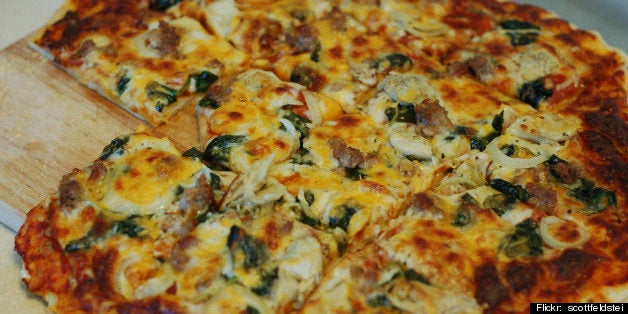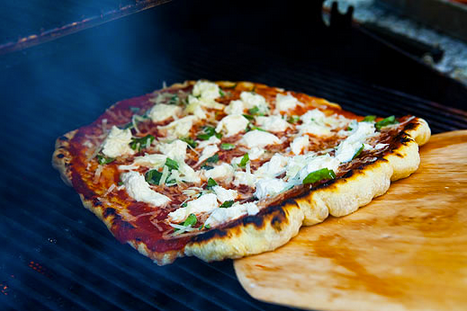
Pizza is one of the easiest dishes you can make at home. Once you have the dough taken care of, it's really just a matter of topping the pie with all your favorite ingredients and waiting no more than 10 minutes for it to come out of the oven.
But of course, there are a number of things that can go wrong even with such a simple dish. And there's nothing more disappointing than a subpar pizza. Check out the five most common pizza-making mistakes and avoid them at all costs the next time you make a pie at home. It's easy, you just need patience and a little self restraint.
Too Much Cheese
You might think that there's no such thing as too much cheese (we used to believe the same thing) but when it comes to pizza, a heavy hand with the cheese can mean bad things. For one, too much cheese normally means a lot of grease. And two, a pizza can only hold so much cheese. If you don't take it easy with the cheese -- adding just enough to almost cover the sauce -- you're pizza is going to fall apart under the weight of all that dairy.
Too Many Toppings
Just like too much cheese can create pizza problems, so can adding too many toppings. Not only will your pizza be too heavy for the dough, but it can also mean uneven cooking. The more toppings, the more time they'll take to cook. Meanwhile the crust will cook at its normal cooking time meaning that you'll either have an overly cooked crust (a.k.a. burnt) or undercooked toppings.
Thin Dough
We're fans of thin crust so we understand the desire to roll out your pizza dough as thin as it will possibly go. But there's a risk to this, and that's rolling your dough so thin that it will either tear before you even get a chance to top it or that it just won't support the sauce, cheese or toppings after baked. Roll out your pizza dough carefully -- and stop before it begins to look weak.
Soggy Dough
Soggy pizza can happen for a number of reasons (like adding toppings that release too much water) but the number one reason is that the pizza wasn't cooked in a hot enough oven. Give your oven time to heat up to 500 degrees (or as close to that as possible). We know you're impatient to eat your pizza, but the hotter the oven the better your pizza will be and the faster it will cook.
Jumping The Gun
We know. As soon as you pop that pizza in the oven your whole kitchen fills with the amazing smell of homemade pizza. You want to eat it right away. And if you peek in the oven, and it looks done, you might be tempted to do just that. But keep in mind, a pizza generally needs about 3-4 minutes more in the oven after it looks "done." You want to be sure that the dough underneath your toppings is completely cooked through.
Not Allowing To Cool
Patience is not a virtue all of us possess, especially when it comes to pizza. But if you give your pizza 2-3 minutes to cool after it comes out of the oven it will make all the difference. Not only will the cheese have time to set, but you can also avoid burning the roof of your mouth.
Check out these pizza recipes.
